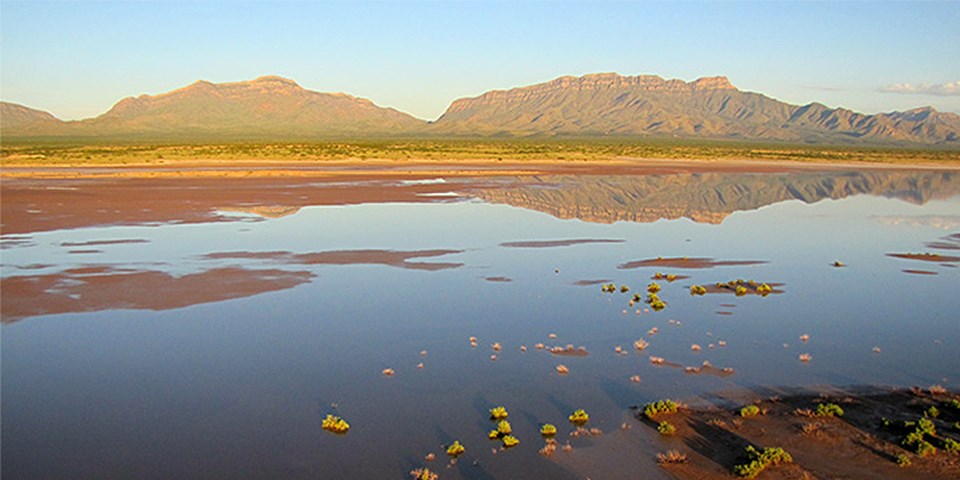
NPS Photo In the heart of New Mexico’s Tularosa Basin, wave-like dunes of gypsum sand cover 275 square miles of desert, part of which is protected by White Sands National Park. Sandwiched between the dunes and the San Andres Mountains stretches a vast area known as the Alkali Flat. Lake Lucero lies in its southwest corner. Together they make up the source of the dunes. During the last ice age 24,000 to 12,000 years ago, the climate was much wetter. Rain and snowmelt carried gypsum into the basin from the San Andres Mountains to the west and from the Sacramento Mountains to the east. The gypsum runoff settled in a 1,600 square mile lake we now call Lake Otero. About 12,000 years ago, as the ice age ended, Lake Otero began to evaporate, changing from a lake to a playa, or dry lake bed that temporarily fills with water. Left behind were concentrations of selenite, the crystalline form of gypsum. Selenite crystals formed beneath the clay and silt surface of the flat and waited for the wind, which began to sweep the area at the end of the ice age. Dry air currents carried the clay and silt from the basin and exposed the buried crystals. Eventually, freezing and thawing broke the large crystals into progressively smaller chunks, finally turning them into sand. The tiny grains are picked up by the wind and bounced along in a process called saltation. Constantly moving to the northeast, sand grains moved a few inches at a time, eventually forming the famous white dunes. Today, after heavy rains, water still settles in a 10 square mile area called Lake Lucero, where the process of dune formation continues. The soil of the Tularosa Basin contains vast amounts of gypsum-laden water. Capillary action forces the water upward. Beneath the surface of Lake Lucero, selenite crystals form in the mud, just as they did in the former and larger Lake Otero. A thin crust of gypsum and other minerals, including table salt and Epsom salt, may also be deposited. Eventually, this crust is swept up by the wind and carried from the basin, exposing more selenite crystals, which break down to form more sand. The formation of sand at Lake Lucero and Alkali Flat is on a smaller scale than it was when Lake Otero existed, but Lake Lucero and Alkali Flat remain the primary source of new dunes in White Sands National Park. Today, the trail to Lake Lucero passes steep gullies where selenite crystals have been exposed by erosion of what was once the floor of Lake Otero. As the breakdown continues, selenite fragments are washed into Lake Lucero. You may see them as transparent crystals. Over time, they turn white as they collide and scratch each other in the wind. The resulting scratches reflect white light, and the sand is also whitened as it is dried by the wind and sun. That’s why, immediately after rainstorms, the dunes appear to be tan in color before they again dry out. White Sands National Park offers a ranger-led tour of Lake Lucero for visitors interested in learning more about the formation of the dunes and the origin of the sands. Reservations are required and accepted one month in advance of the tour date. Special fees apply. Visit our Lake Lucero Tour Page for more information about tour times and reservations. Learn more: Lake Lucero |
Last updated: February 4, 2020
